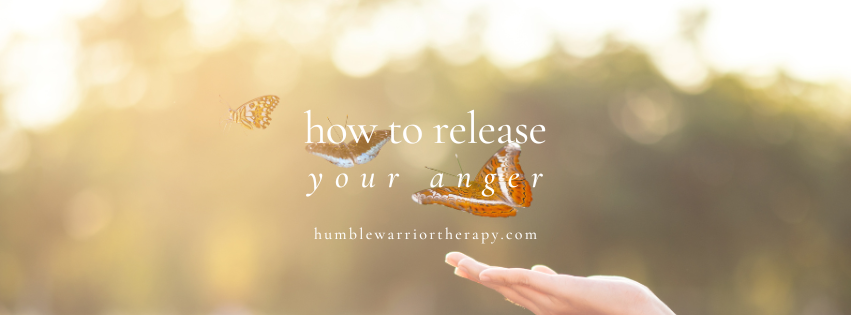How to Release Anger Without Causing Harm
Why We Struggle with Anger
Lately, I’m seeing a commonality in my sessions with patients. ANGER. Not just fleeting irritation, but the full spectrum of the emotion from frustration, resentment to rage. Different flavors of anger; same energy.
The truth is, most of us (even me) don’t know what to do with it. We wonder: Is it safe to feel this? Is it okay? What do I do about it?
Anger as a Messenger
Our egos resist anger. Anger is intense, and many of us fear social rejection if we show it. We were taught it’s “too much,” “too aggressive.” I wasn’t raised to embrace my anger, and honestly, I still struggle to do so. But here’s what it’s teaching me: anger is a wise discriminator.
She shows up to tell us something isn’t working.
That a boundary has been crossed.
That something needs to change.
Creating Space: What Anger Is Asking For
I am learning, at the very least, to be in relationship with anger – to listen to it; to feed the wisdom she is trying to teach us.
But how do we feel anger without causing harm to others?
Often, I find that anger has a way of asking for space. It’s not about the other person. It’s my nervous system being pushed to its limit. The anger is saying, “I need room to breathe.”
Safe and Conscious Ways to Release Anger
I’ve been testing out a theory about boundaries related to anger in my own life. For instance, when I feel anger or frustration toward my partner, children (or these days, the state of the world), I pause and ask, What boundary is anger pointing me towards? What would give me space in this moment – going to the gym? How about a night away?
For me, physical expression takes the edge off my intense emotions. Sometimes that means a long walk, heavy lifting, or even screaming into a pillow. For you, it might look like getting in your car, rolling up the windows, and yelling FUCK at the top of your lungs. Or letting yourself cry, rant, vent – whatever gets it out.
It’s not about dramatics. It’s about release.
The Risk of Holding It In
When anger builds and has nowhere to go, it turns inward as depression, or it leaks out sideways as passive aggression, resentment, or self-loathing. But when we let it move through us consciously, anger can become the fuel for change, for boundary setting, for truth telling.
What Your Anger Might Be Trying to Teach You
I’m on this journey with you. I’ll let you know if I ever “arrive.” But I do know this: if, collectively, we are feeling angry, frustrated or resentful over and over, anger is asking us to leave something behind. To change something. To draw a line. To care for ourselves better.
You’re Not Alone: A Collective Call for Boundaries
Here is your invitation to explore and manage your anger. Feel it fully. Move it through your body. Yell into a pillow. Scream in your car. Punch a cushion. Dance it out. Then listen to what remains underneath the heat. What wisdom is your anger offering you? What boundaries are you able to set?
Your anger isn’t wrong—it’s holy. And when honored, it will set you free.
This year, we’re exploring real-world self-care that helps you come home to yourself. Each month, I share simple, grounded ways to reconnect with your body, support your mental health, and create space for what truly matters. If you’d like to walk this path with me, my monthly newsletter offers reflections, practices, and resources to support your growth.
Rachel Gordon, MA, MEd, is a psychotherapist and founder of Humble Warrior Therapy, where she supports individuals in the Denver area with heart-centered, trauma-informed care.
Tags: anger release, Castle Rock Therapist, Denver therapist, emotional health, mental health support, nervous system regulation, Rachel Gordon, self-care, somatic healing, therapy tools

